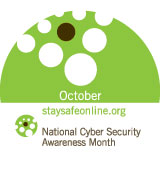"Smishing" is derived from the familiar "phishing." The "sm" comes from SMS, the protocol used to transmit text messages via cellular devices.
Smishing victims receive SMS messages along these lines: "We're confirming you've signed up for our dating service. You will be charged $2/day unless you cancel your order visit URL: www.*******.com.
When visiting the URL, victims are prompted to download a program which turns out to be a Trojan horse.
Some of the new smishing techniques include mobile spyware that once downloaded to a phone, can eavesdrop on conversations. Security experts expect hackers and other criminals to increasingly turn to this type of available technology.
Check your text messages carefully. ...
There's a chance your cell phone was tagged Friday in a sophisticated banking scam.
The message targeted customers of Central Bank of Kansas City but may have reached anyone served by Verizon, AT&T, T-Mobile and Sprint Nextel. Scammers hoped to trick bank customers into revealing personal account codes at a bogus Web site.
"We've probably gotten a thousand phone calls today (at) our tiny little bank, people just reporting, Good Samaritans," William Dana, president of the bank, said Friday.
Dana said the bank was able to shut down the bogus Web site. Central Bank also posted a warning on its real Web site.
The scam likely used equipment to send the message broadly to cell phone prefixes issued in the Kansas City area. The scammers hoped some of the text messages would reach cell phones of Central Bank customers.
The practice is called "smishing." It's a text messaging version of similar e-mail scams known as "phishing," in which the scammer blindly sends the fake message not knowing customers' e-mail addresses.
Another practice, called "vishing," uses automatic dialers to send out recorded phone messages in hopes of hitting the targeted bank's customers. The phone message directs customers to the bogus Web site or asks them to key in account information to confirm their identity. MORE

 NEWSLETTER SIGN UP
NEWSLETTER SIGN UP SUBSCRIBE
SUBSCRIBE CONTACT
CONTACT

















Leave a comment